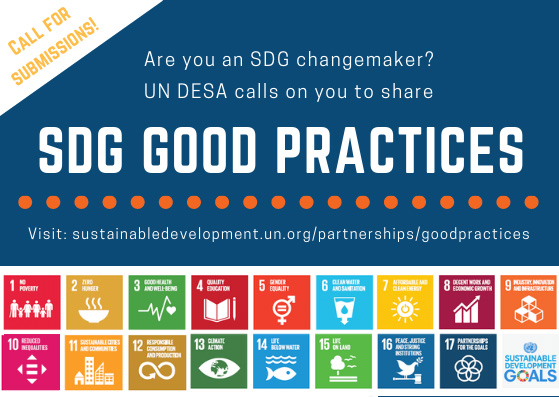Baseline data methodology and analytics for the assessment of SDG indicator 11.3.1 “Land Use Efficiency”
Description
The Global Human Settlement Layer (GHSL) provides free, high quality standardized data about the status of human settlements and their dynamics both in terms of built-up and population and delivers free tools for geospatial data analysis and for automatic information extraction from satellite imagery. The platform integrates geospatial data with socio-economic information to characterize in a harmonized way all urban centres around the globe and hence better assess the SDG indicators requiring data at city level such as Land User Efficiency.
The objective is to:<br />
1) Produce global datasets to make possible the monitoring of indicator 11.3.1 and thus moving it from a Tier III to a Tier II indicator based on the UN Metadata.<br />
2) Promote the harmonisation of indicator reporting by adopting the global definition of cities and settlements that allows to cover the full range of urban centres (more than 10.00) rather than a sample of cities used currently; <br />
3) Offer free and open data and computing tools that have (a) global coverage, (b) multi-temporal information, and (c) that are planned to be available also for the future <br />
4) Offer support policy with sound data and analytics<br />
<br />
The work is described in the following documents<br />
a) Production and delivery of global and free data available through the JRC Open Data Catalogue (https://data.jrc.ec.europa.eu/) and the GEOSS web portal (http://www.geoportal.org/) <br />
b) Harmonisation of statistics GHSL Urban Centres Data Base (GHS-UCDB) release Jan. 28 2018<br />
c) Policy support: Atlas of the Human Planet 2018 (EUR 29497 EN)
The GHSL project that provides the datasets is an institutional European Commission project. The datasets are used for applications in reporting on International Frameworks other than SDG’s including UN Habitat Urban Agenda, Sendai Framework for Disaster Risk Reduction and Paris Agreement on Climate Change.
The project aims to continue to produce the datasets for use in future reporting.
The activity is part of an Administrative Arrangement between JRC Dir. E.1 and DG-REGIO. The JRC supports the policy DG with data production, integration and analytics to uptake the global commitment for a harmonised definition of cities and settlements due for decision at the UN Statistical Commission in 2020.
The Urban Centre Database (UCDB) is a prime example of open, coordinated and sustained data sharing, as proposed by the Group on Earth Observations (GEO). The Atlas and the UCDB demonstrate that the combination of open data sets can generate new information. The new technology used for generating the Global Human Settlement Layer (GHSL) products allows producing global, yet locally consistent data for local action at the city level. The uptake of the data by decision makers for local, national or global reporting requires a regular update of the information. It is envisioned that future data for generating indicator SDG 11.3.1 may be generated through integration of products in the portfolio of the EU’s Copernicus space programme.
Population density and built-up areas are two baseline datasets that can be potentially used to monitor indicator SDG 11.3.1 over time. <br />
<br />
The estimation of Land Use Efficiency in over 10,000 urban centres between 1990 and 2015 using the GHSL data and the LUE efficiency tool developed by the GHSL team highlights that :<br />
• With GHS-UCDB data it is possible to estimate the Land Use indicator, potentially lifting it from its Tier II classification into Tier I; <br />
• More than half of the urban centers of the globe use land less efficiently than in the past; <br />
• The current internationally agreed LUE methodology may be improved to better account the urbanization trajectories; <br />
• The LUE based on spatial metrics, can be assisted by proxy measures like the population density per unit of spatial expansion, that more closely capture the characteristics of the socio-spatial development.
JRC articles on LUE
• Estimation of Land Use Efficiency from the Global Human Settlement Layer (GHSL) https://onlinelibrary.wiley.com/doi/abs/10.1002/9781119457121.ch2
• Monitoring 25 years of Land Use Efficiency in 10,000 Urban Centers: perspectives from the Global Human Settlements Layer http://ic-sd.org/wp-content/uploads/sites/4/2018/11/Michele-Melchiorri…
• Principles and Applications of the Global Human Settlement Layer as Baseline for the Land Use Efficiency Indicator –SDG 11.3.1 https://www.preprints.org/manuscript/201810.0085/v1
• Atlas of the Human Planet 2018 https://ec.europa.eu/jrc/en/publication/eur-scientific-and-technical-re…
GHSL website https://ghsl.jrc.ec.europa.eu/
Deliverables & Timeline
Resources mobilized
Partnership Progress
| Name | Description |
|---|
Feedback
Action Network


Timeline
Entity
SDGs
Region
- Europe
Geographical coverage
Website/More information
Countries
Contact Information
Lucian Parvulescu, Policy Officer
